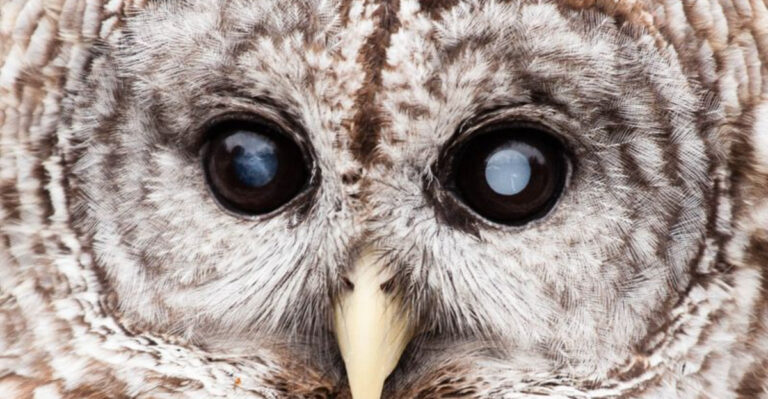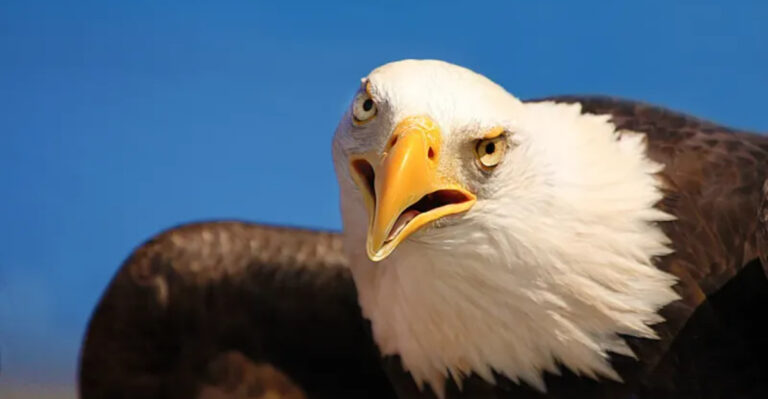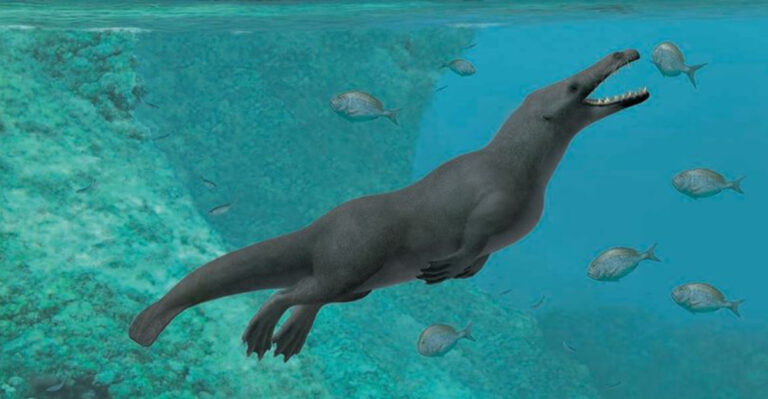13 Iconic American Beasts That No Longer Roam The Lands
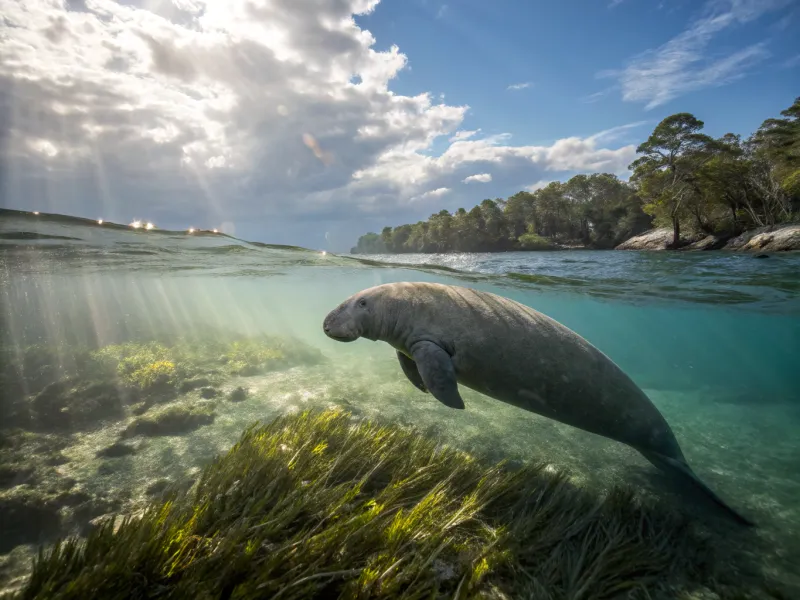
Throughout history, North America was home to some of the most magnificent and formidable creatures. Sadly, many of these iconic beasts are no longer around today.
From massive mammals to unique birds, their disappearance has shaped the landscapes and ecosystems we know today. In this article, we’ll explore 13 of these extraordinary animals that once roamed the earth, leaving behind a legacy that continues to captivate our imagination.
1. Woolly Mammoth
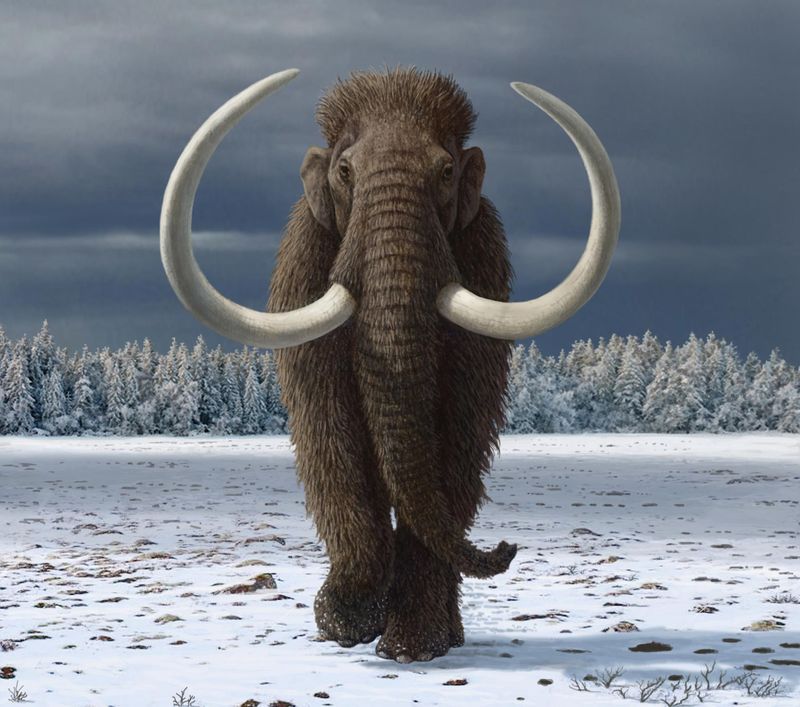
The woolly mammoth, renowned for its immense size and thick fur, was a magnificent beast that roamed North America during the Pleistocene epoch.
Towering at over 12 feet tall, these creatures were a sight to behold. Their long, spiraled tusks could reach lengths of up to 15 feet, allowing them to forage beneath the snow for food.
Living in herds, the woolly mammoths adapted to the frigid climates, utilizing their fur and fat as insulation against the cold.
They migrated in large groups, following the patterns of the seasons, and were a vital part of the Ice Age ecosystem.
Despite their grandeur, these colossal creatures faced extinction around 4,000 years ago. Climate change and overhunting by early humans are believed to have contributed to their demise, leaving behind only fossilized remains.
2. Passenger Pigeon
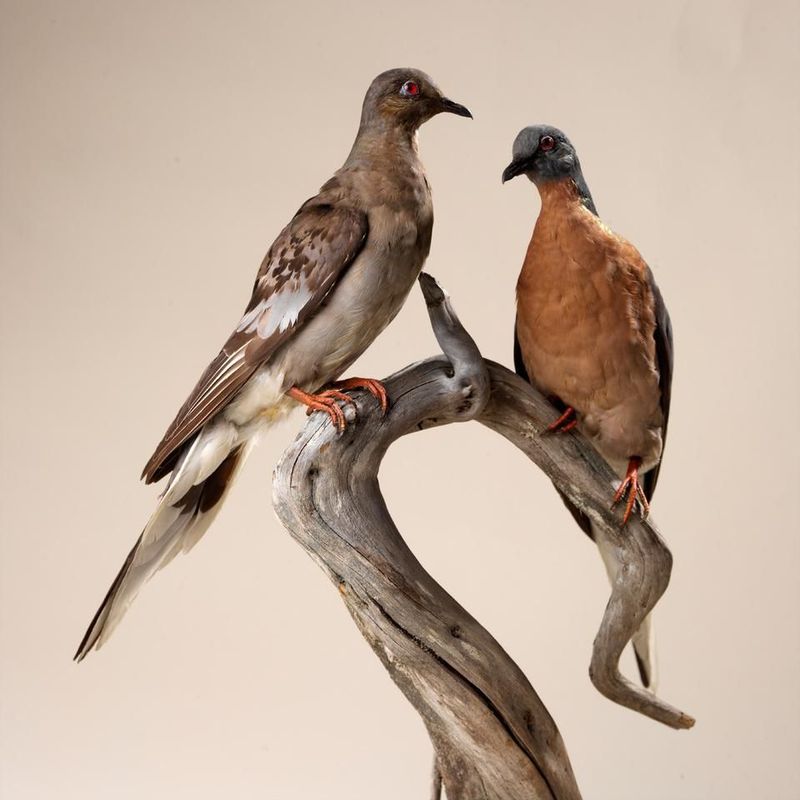
Once numbering in the billions, the passenger pigeon was a marvel of the skies. These birds formed massive flocks, sometimes blocking out the sun for hours as they soared through the air.
Known for their speed and grace, passenger pigeons could reach velocities of up to 60 miles per hour. Passenger pigeons played a crucial role in their ecosystem, aiding in seed dispersal and providing a food source for predators.
However, their abundance was short-lived. By the late 19th century, relentless hunting and habitat destruction led to their rapid decline.
The last known passenger pigeon, named Martha, passed away in 1914 at the Cincinnati Zoo. Her passing marked the end of a species that once epitomized the boundless potential of nature.
3. Great Auk
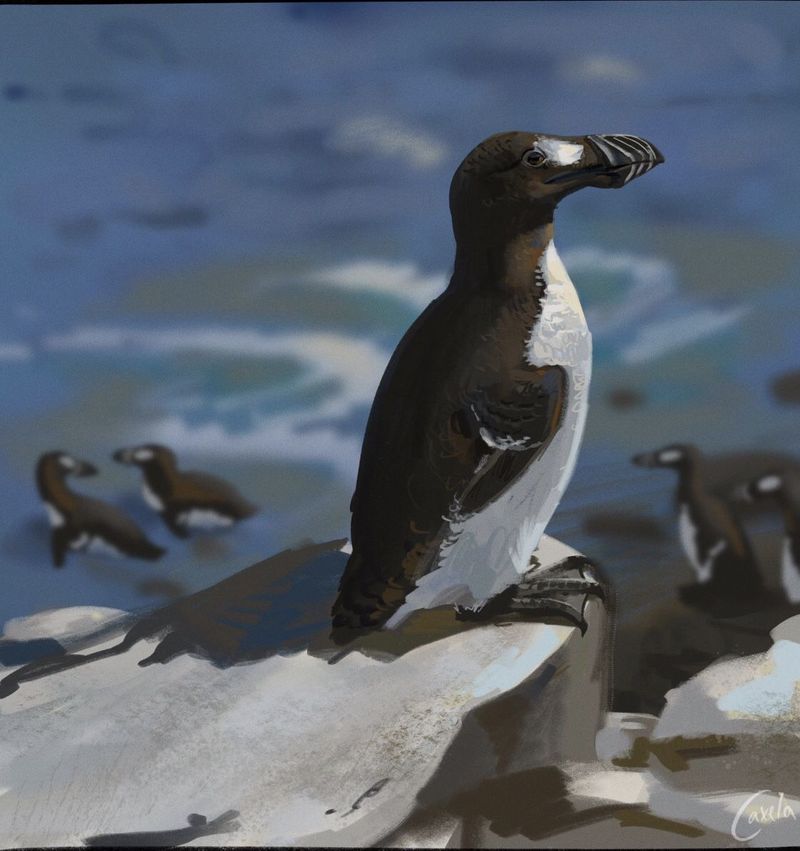
The great auk, a flightless bird once native to the North Atlantic coasts, was a remarkable swimmer and diver. With its black and white plumage and striking beak, it was well-suited to life in the cold waters and rocky shores.
Great auks were social creatures, nesting in large colonies and raising their young in relative safety. However, their inability to fly made them vulnerable to predators, including humans who hunted them for their meat and feathers.
By the mid-19th century, excessive hunting had driven the great auk to extinction. The last confirmed sighting was in 1844, when the final pair was killed on a remote island.
Today, the great auk remains a symbol of the fragility of wildlife, reminding us of the need for conservation efforts to protect species at risk.
4. Carolina Parakeet
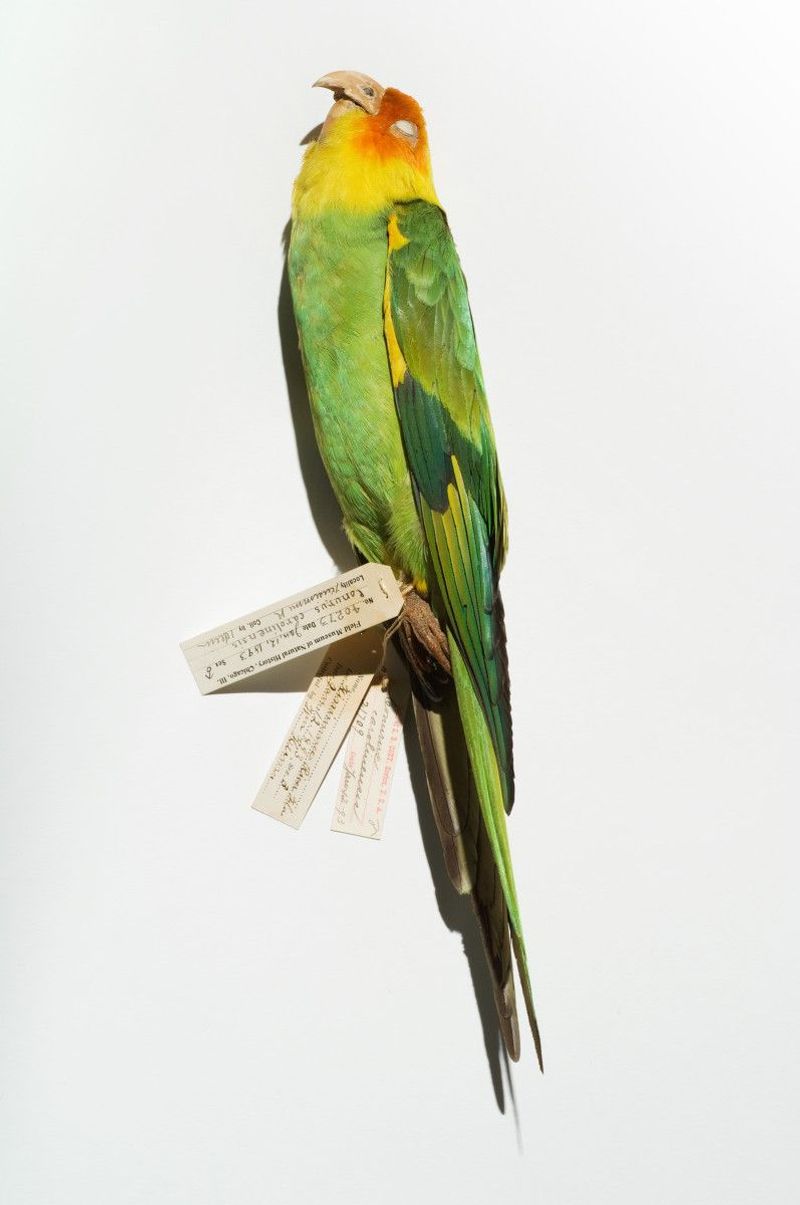
The Carolina parakeet, with its vibrant green and yellow plumage, was the only native parrot species in the United States.
These social birds were often seen in large flocks, filling the skies with their lively chatter and striking colors. Inhabiting the southeastern United States, Carolina parakeets thrived in a variety of habitats, from swamps to forests.
Their diet consisted of seeds and fruits, which they foraged with their strong, curved beaks. However, the beautiful Carolina parakeet faced numerous threats, including habitat loss and hunting.
Farmers, considering them pests, often got rid of them, and the demand for their feathers in the millinery trade further diminished their numbers.
By the early 20th century, Carolina parakeets were declared extinct, leaving behind a legacy of what once was a colorful presence in America’s natural landscape.
5. American Lion
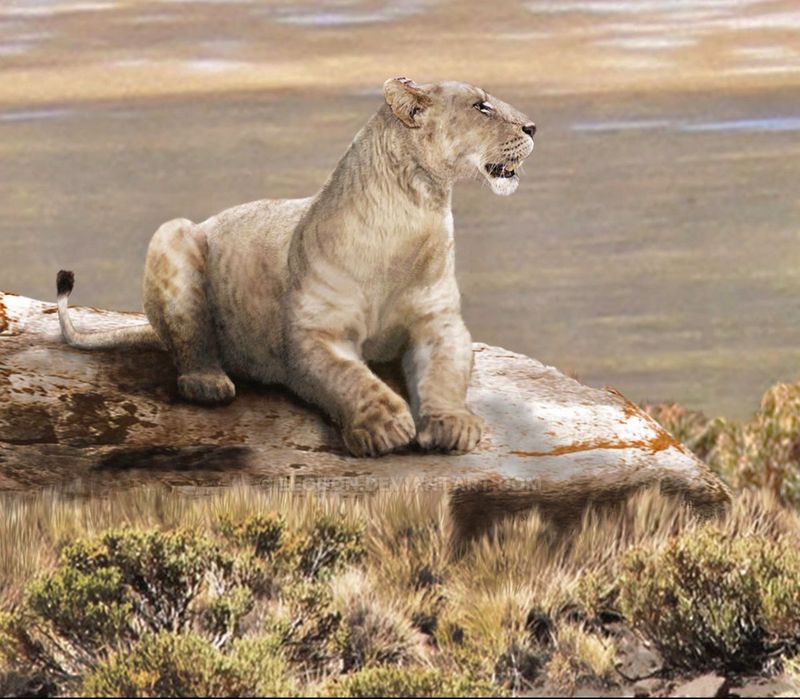
The American lion, also known as Panthera atrox, was one of the largest cats to ever roam North America. Similar in appearance to the modern African lion but significantly larger, these formidable predators were apex hunters of their time.
Standing about four feet tall at the shoulder and weighing up to 1,000 pounds, the American lion was built for strength and speed. It hunted large herbivores such as bison and mammoths, using its powerful jaws and sharp claws to bring down prey.
Despite their prowess, American lions became extinct around 11,000 years ago, possibly due to climate change and competition for food with humans and other predators.
Their remains are often found in tar pits and caves, where they left behind a glimpse of their once-dominant presence in the prehistoric landscape.
6. Steller’s Sea Cow

Steller’s sea cow was an enormous marine mammal that inhabited the cold waters of the Bering Sea. Growing up to 30 feet in length and weighing as much as 10 tons, these gentle giants were herbivores, feeding primarily on kelp and sea grasses.
They were discovered in 1741 by the German naturalist Georg Wilhelm Steller, who noted their docile nature and lack of fear towards humans.
Unfortunately, this made them easy targets for hunters seeking their meat and blubber. Within 27 years of their discovery, Steller’s sea cows were hunted to extinction.
7. Giant Ground Sloth
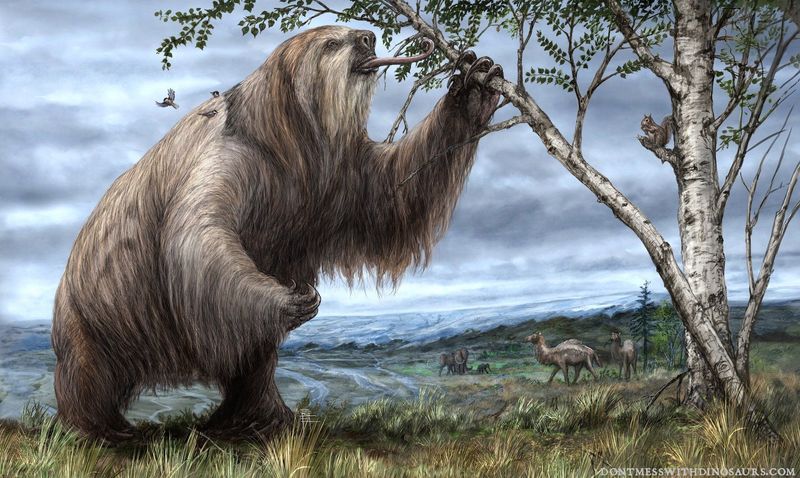
The giant ground sloth, a prehistoric wonder, was one of the largest land mammals to ever exist. Weighing up to four tons and standing over 20 feet tall when on its hind legs, this creature was a gentle giant of the ancient world.
Covered in shaggy fur and equipped with long, curved claws, giant ground sloths were herbivores that fed on leaves and branches.
They inhabited the forests of North and South America, where they moved slowly and deliberately, leaving a significant impact on their environment.
Despite their imposing size, giant ground sloths went extinct around 10,000 years ago, likely due to climate changes and hunting by early humans.
Their disappearance marked the end of an era where oversized mammals dominated the landscape, giving way to smaller, more adaptable species.
8. Sabertooth Cat
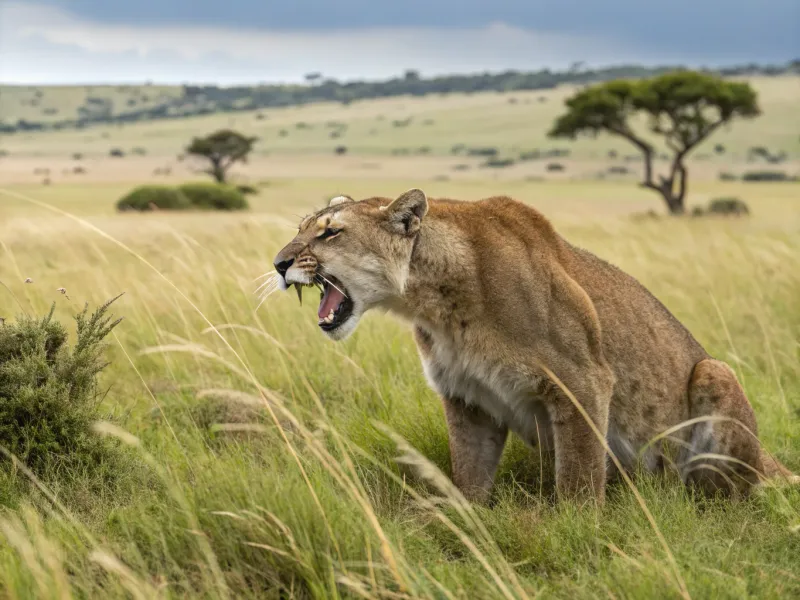
The sabertooth cat, often referred to as Smilodon, was a prehistoric predator renowned for its long, curved canine teeth.
These impressive weapons, up to seven inches long, were used to pierce the flesh of their prey, which included large herbivores like bison and mastodons.
Sabertooth cats were formidable hunters, possessing powerful limbs and muscular bodies that allowed them to tackle prey much larger than themselves.
They thrived in the plains and forests of North and South America during the Pleistocene epoch. Despite their fearsome reputation, sabertooth cats faced extinction approximately 10,000 years ago. However, climatic changes and the decline of large prey species likely contributed to their downfall.
9. Dire Wolf
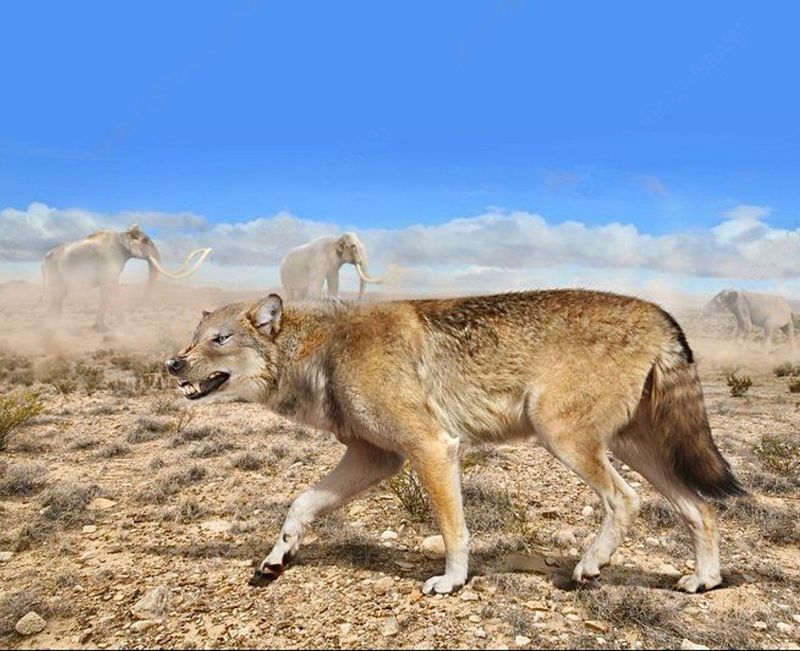
The dire wolf, a legendary creature elevated by popular culture, was a real and formidable predator of the Ice Age.
Larger and more robust than modern wolves, dire wolves roamed in packs across North America, hunting large mammals. With powerful jaws and sharp teeth, they could take down prey much larger than themselves.
Their social structure and pack mentality allowed them to coordinate hunts and survive in the harsh climates of the Pleistocene.
Despite their dominance, dire wolves went extinct around 10,000 years ago. Changes in climate and the disappearance of their food sources contributed to their extinction.
Today, their legacy lives on in the fossilized remains found in places like the La Brea Tar Pits, offering insights into their lives and environment.
10. Harlan’s Ground Sloth
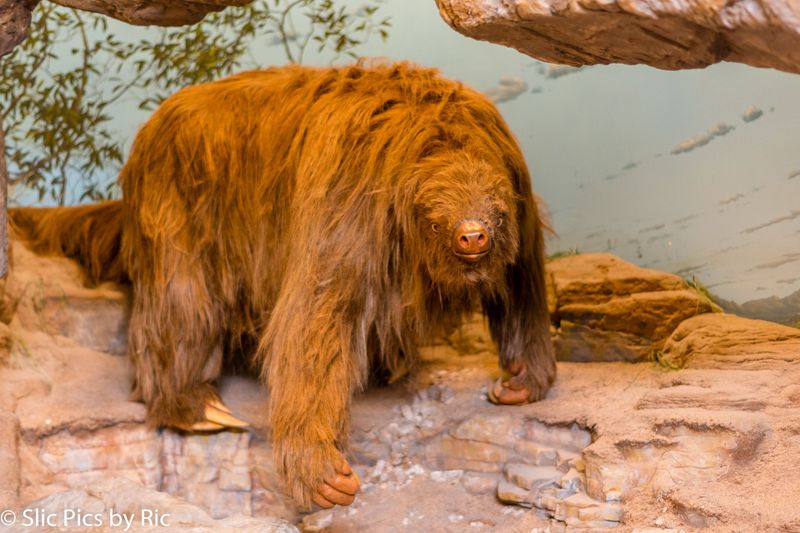
Harlan’s ground sloth, a lesser-known relative of the giant ground sloth, was a significant presence in the prehistoric landscapes of North America.
While smaller than its cousin, it still reached impressive sizes, weighing up to a ton. These sloths were herbivorous, using their strong limbs and curved claws to strip leaves and bark from trees.
They played a crucial role in their ecosystem, influencing the vegetation and providing resources for other species.
Harlan’s ground sloth disappeared around 11,000 years ago, likely due to changing climates and human activity.
Their extinction is part of a broader pattern of megafaunal loss at the end of the Pleistocene, highlighting the interconnectedness of species and the lasting impact of environmental and human pressures.
11. Glyptodon
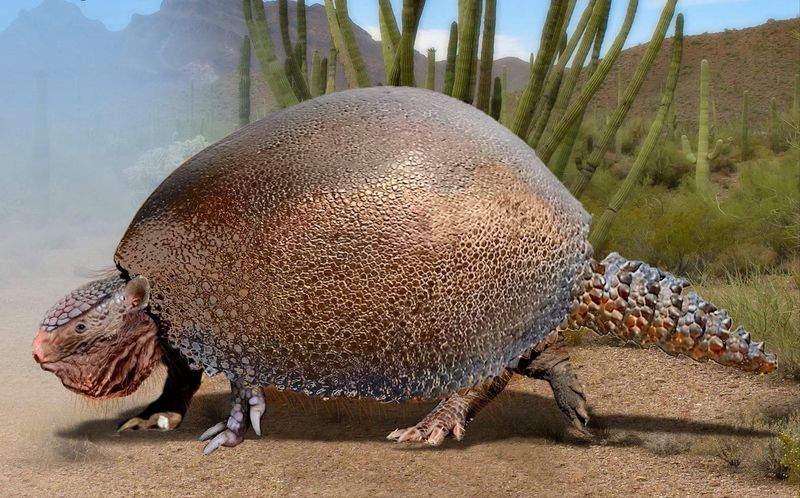
The glyptodon, an ancient relative of the armadillo, was an armored giant of the prehistoric world. With a shell resembling that of a turtle, these creatures could weigh up to two tons and grow as large as a Volkswagen Beetle.
Inhabiting the grasslands of North and South America, glyptodons were herbivores that grazed on a variety of plants. Their heavily armored bodies provided protection from predators, making them a formidable presence in their environment.
Despite their defenses, glyptodons became extinct around 10,000 years ago, likely due to changes in climate and hunting by humans.
Their unique appearance and impressive size make them a fascinating subject of study, offering a glimpse into the diversity of life that once flourished in ancient times.
12. Mastodon
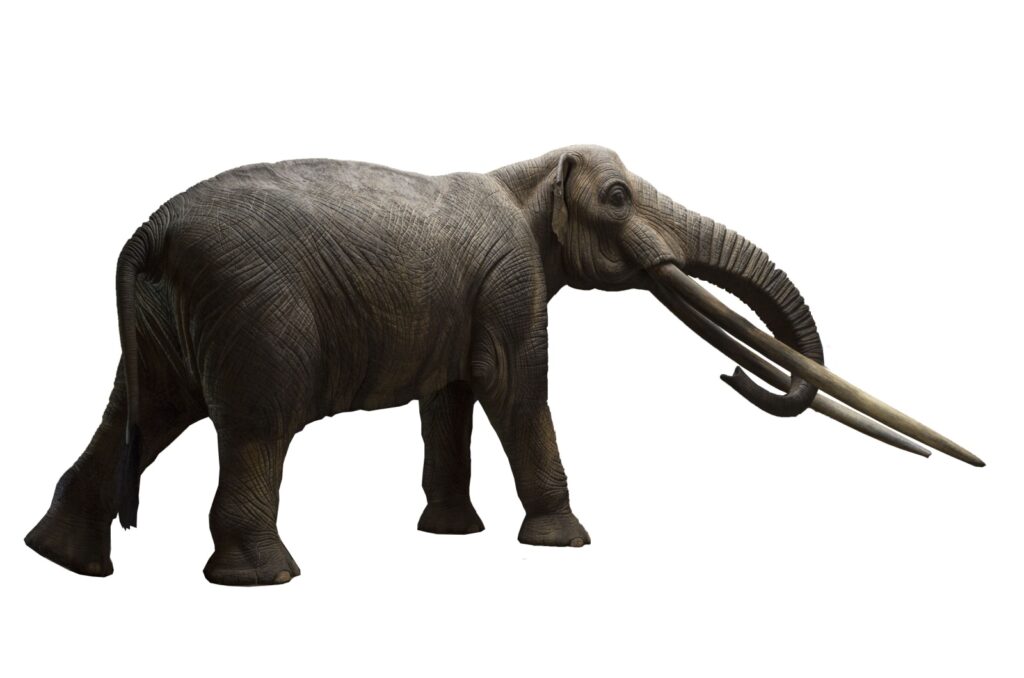
Shutterstock
The mastodon, a close relative of the elephant, roamed the forests and grasslands of North America during the Pleistocene epoch. With their long, curved tusks and a robust, stocky build, mastodons were well-adapted to cold, harsh climates.
They fed on shrubs, conifers, and other vegetation, shaping their environment with their foraging habits. Despite their size and strength, mastodons went extinct around 10,000 years ago, possibly due to climate change and overhunting by early humans.
Their skeletal remains, often found in tar pits, provide invaluable insight into life during the Ice Age.
13. Titanis
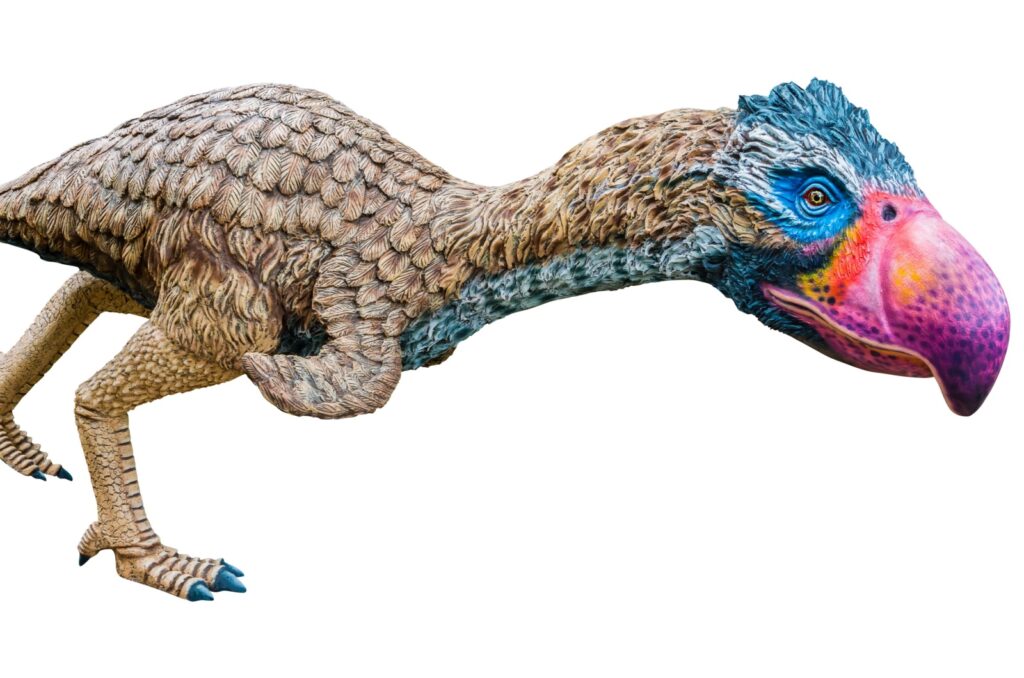
Shutterstock
Titanis, a giant flightless bird that once roamed the southern United States, was a formidable predator. Standing over 9 feet tall and weighing up to 500 pounds, this bird was capable of running at impressive speeds.
Titanis was a part of the “terror bird” family, known for their large size and predatory nature. It used its powerful legs to chase down prey and its sharp beak to deliver fatal blows.
These birds were apex predators during the Miocene and Pliocene epochs. However, Titanis went extinct around 1.8 million years ago, likely due to changing climates and competition with mammals.

